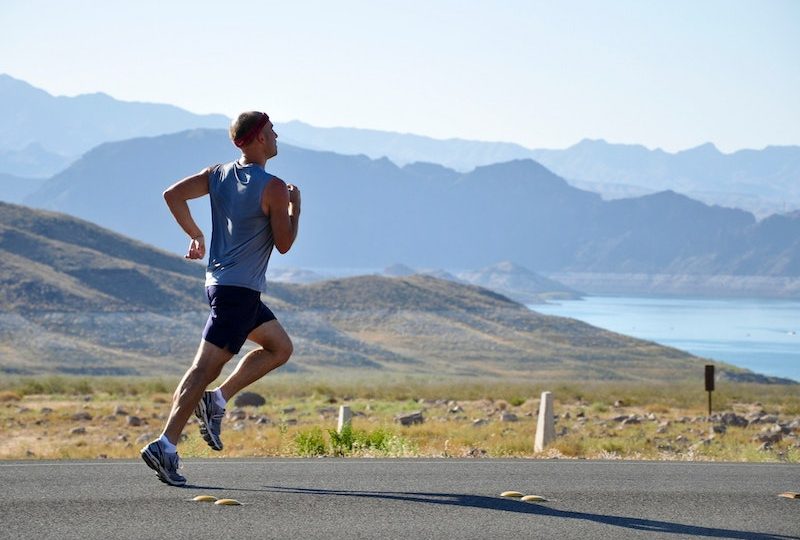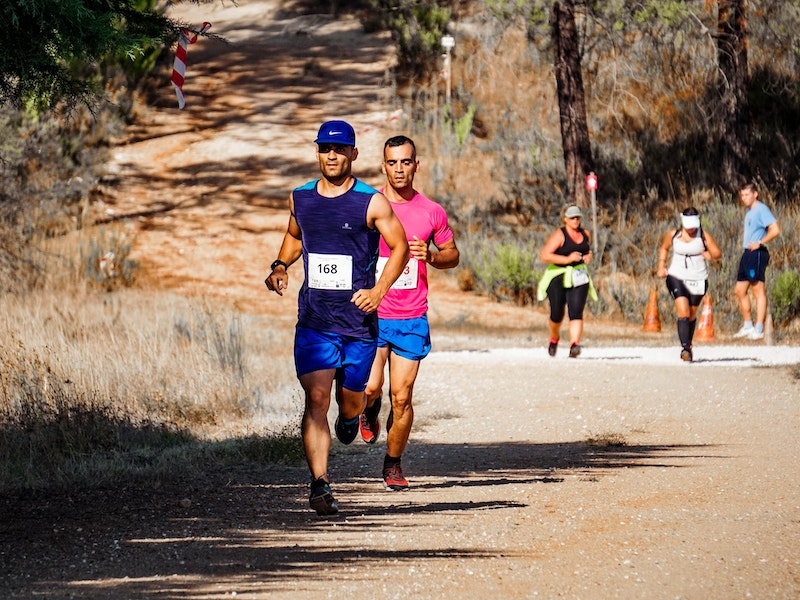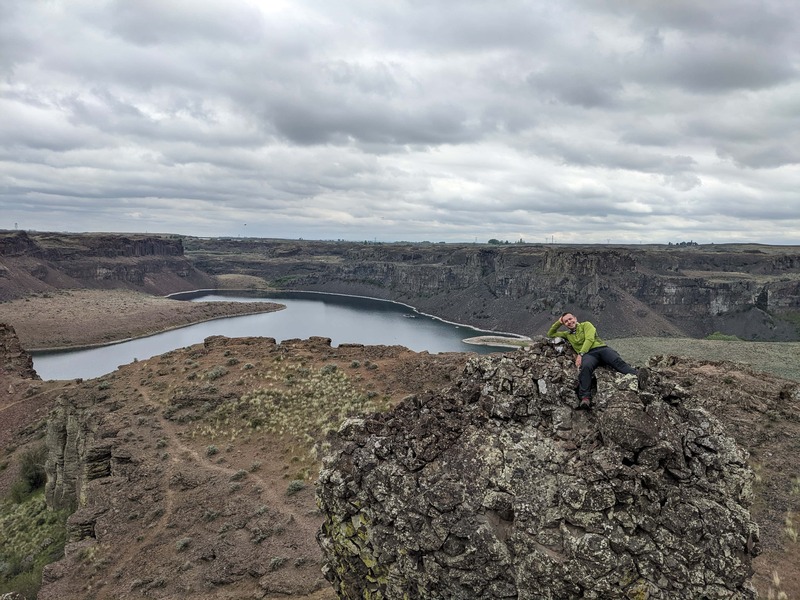This article explores the world of mountain running, providing tips and techniques for training and conquering the peaks. Whether you’re a seasoned runner or just starting out, discover how to improve your endurance, tackle steep terrain, and enjoy the thrill of running in breathtaking mountain landscapes. From gear recommendations to safety considerations, this guide covers everything you need to know to make the most of your mountain running experience.
Introduction
 Mountain running, also known as trail running, is a form of running that takes place on mountainous terrain, often on narrow and rocky trails. It is a challenging and exhilarating sport that requires a high level of fitness, endurance, and technical skill. In this article, we will explore the world of mountain running, providing tips and techniques for training and conquering the peaks.
Mountain running, also known as trail running, is a form of running that takes place on mountainous terrain, often on narrow and rocky trails. It is a challenging and exhilarating sport that requires a high level of fitness, endurance, and technical skill. In this article, we will explore the world of mountain running, providing tips and techniques for training and conquering the peaks.
Benefits of Mountain Running
Mountain running offers numerous benefits that go beyond traditional road running. Running on mountainous terrain provides a challenging workout that engages a variety of muscle groups and improves overall fitness. Mountain running also provides the opportunity to connect with nature and enjoy stunning views that cannot be found on urban running routes.
Additionally, mountain running can be a great way to escape from the hustle and bustle of daily life and experience a sense of peace and solitude. It can also be a social activity, allowing runners to join local groups or races and connect with like-minded individuals.
Overview of Article Content
This guide is divided into several sections, each of which provides valuable information for those interested in mountain running. In the first section, we will discuss training techniques that can help runners prepare for mountain running. The second section will cover tips for tackling steep terrain, while the third section will focus on gear and safety considerations. In the fourth section, we will provide advice for finding the right mountain trail, and in the final section, we will summarize key points and offer encouragement to try mountain running.
Training Techniques
Before hitting the trails, it is important to prepare your body for the challenges of mountain running. Here are some training techniques that can help improve your fitness and endurance.
Endurance Training
Mountain running requires a high level of endurance. To build endurance, it is essential to incorporate long runs into your training routine. Start by running on flat or gently rolling terrain for an hour or more at a comfortable pace. Gradually increase the duration and intensity of your runs over time.
Hill and Stair Training
Hill and stair training are essential for building strength and endurance in the legs. Find a hill or set of stairs that is challenging but not too steep, and run up and down at a steady pace. Repeat this process several times, gradually increasing the number of repetitions as your fitness improves.
Trail Running
Trail running is an excellent way to build endurance and improve balance and coordination. Running on uneven terrain requires a different set of skills than road running, and incorporating trail running into your training routine can help you develop these skills.
Strength and Conditioning Exercises
In addition to running, it is important to incorporate strength and conditioning exercises into your training routine. Exercises such as squats, lunges, and calf raises can help strengthen the muscles in your legs and improve your overall fitness. It is also important to work on core strength, as a strong core can help improve balance and stability on challenging terrain.
Tackling Steep Terrain
Mountain running often involves steep ascents and descents, which can be challenging for even the most experienced runners. Here are some tips for tackling steep terrain.
Proper Technique for Uphill Running
When running uphill, it is important to maintain a steady pace and conserve your energy. Shorten your stride and lean forward slightly from the ankles to engage your glutes and hamstrings. Use your arms to pump and maintain momentum, and take short, quick steps to maintain balance and stability.
Tips for Downhill Running
Running downhill can be challenging and even dangerous if not approached with the proper technique. When running downhill, it is important to maintain control and avoid overstriding, which can lead to injury. Keep your weight slightly forward, and use your arms for balance and momentum. Shorten your stride and take quick, light steps, focusing on landing midfoot or forefoot rather than on your heels.
Managing Difficult Terrain
Mountain trails can be unpredictable and may include challenging terrain such as rocks, roots, and mud. When running on difficult terrain, it is important to stay alert and adjust your pace and technique as needed. Use your arms for balance and adjust your foot placement to avoid obstacles. If you encounter steep or unstable terrain, slow down and use caution to avoid injury.
Gear and Safety Considerations
Mountain running requires specialized gear and safety precautions to ensure a safe and enjoyable experience. Here are some key considerations.
Shoes and Clothing Recommendations
Choosing the right shoes and clothing is essential for mountain running. Look for shoes with a rugged sole and good traction to provide stability on rocky and uneven terrain. Clothing should be breathable and moisture-wicking to keep you comfortable during long runs. Consider wearing a hat and sunglasses to protect your face and eyes from the sun.
Navigation Tools and Techniques
Navigating mountain trails can be challenging, and it is important to have the right tools and techniques to stay on course. Carry a map and compass or GPS device, and familiarize yourself with the trail before setting out. Pay attention to trail markers and signs, and be prepared to adjust your route if necessary.
Safety Precautions for Mountain Running
Mountain running can be a risky activity, and it is important to take the necessary safety precautions. Always carry a cell phone and emergency whistle, and let someone know your planned route and expected return time. Be aware of weather conditions and adjust your plans accordingly. If running alone, consider carrying pepper spray or a personal alarm for added security.
Finding the Right Mountain Trail
Finding the right mountain trail is essential for a safe and enjoyable mountain running experience. Here are some tips for researching and selecting a trail.
Researching Trails and Destinations
There are many resources available for researching mountain running trails and destinations. Online resources such as AllTrails and Trail Run Project provide trail information and reviews from other runners. Local running stores and clubs can also provide valuable information on nearby trails.
Understanding Trail Difficulty Ratings
Mountain trails are often rated for difficulty based on factors such as terrain, elevation gain, and distance. It is important to understand these ratings and choose a trail that matches your fitness level and experience. Start with shorter, easier trails and gradually work up to more challenging terrain as your fitness improves.
Recommendations for Popular Mountain Running Destinations
There are many popular destinations for mountain running, each offering unique terrain and scenery. Some popular destinations include the Rocky Mountains in Colorado, the Grand Canyon in Arizona, and the Alps in Europe. Research local trails and accommodations, and plan your trip accordingly.
Conclusion
Mountain running is a challenging and rewarding activity that offers numerous physical and mental benefits. By incorporating training techniques, tackling steep terrain, and taking the necessary safety precautions, you can enjoy the thrill of running in breathtaking mountain landscapes. So why not lace up your trail shoes and hit the trails? With the right preparation and mindset, you can conquer the peak and achieve your mountain running goals.









